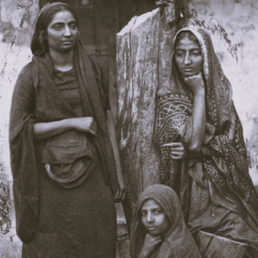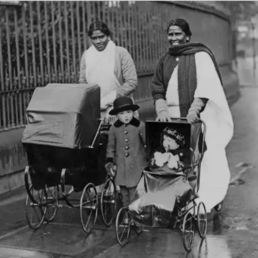We accidentally stumbled upon this almost-forgotten town of New Burnside, nestled deep in Illinois. This town, of 250 residents, is a treasure trove of history tied to the American Civil War, Bombay, and an iconic men’s grooming trend, that is both bizarre and brilliant!
This erstwhile railway township owes its name to a certain Civil War veteran, General Ambrose Burnside. Burnside played a pivotal role in the town’s establishment and building of its rail line. His legacy, though, goes far beyond his military service.
During the Civil War, Burnside was responsible for some of the earliest victories in the Eastern theater for the Union army. At one point, when Abraham Lincoln found himself needing a capable leader after dismissing General McClellan, he turned to General Ambrose.
However, this proved to be outside Burnside’s capacity. Soon he encountered two catastrophic defeats. While his military career faced its fair share of ups and downs, Burnside’s most enduring legacy wasn’t his battlefield prowess but his distinctive facial hair style.
And he was not the only one. In the mid-19th century, the American Civil War coincided with a resurgence in the popularity of full facial hair. Men experimented with various grooming styles, ranging from mustaches to mutton-chops, under-beards to sideburns.

Among this eclectic mix, General Ambrose’s style stood out for its uniqueness. His wraparound whiskers, joining strips of hair in front of his ears to his mustache, were clean-shaven on the chin, creating a look that would become iconic.
It’s also important to note that in the early days of the United States Army, beards were forbidden and soldiers were required to shave a minimum of three days a week. In fact, in 1805, an Army veteran was court-martialed for refusing to cut his hair.
However, in the mid 19th century, as times changed, military officers began sporting beards and mustaches. This shift in fashion was not limited to US soldiers. The British East India Company too faced an unusual phenomenon in its new colony, India.
In India, the mustache was a symbol of male prestige. British soldiers, on the other hand, were clean-shaven, making them seem less masculine for which they were mocked. Now, British soldiers could not afford to present themselves as anything other than highly masculine.
After all, they needed to establish the dominance of its imperial race. Soon, the soldiers began adopting the Indian sign of virility. And in 1854, mustaches became compulsory for European troops of the Bombay unit. A classic imperial response to Indian taunts.
The Crimean War further solidified the trend in the coming years, with beards, mustaches, and sideburns becoming symbols of courage and determination. Back in Britain, British men embraced these styles in solidarity with their battlefield heroes.
Soon enough, men in Europe and the United States, particularly those in the military, adopted this trend in the 1850s/60s. Soldiers on both sides of the American Civil War, Union and Confederate generals alike, embraced it with great gusto.
General Ambrose Burnside emerged as one of the forerunners of this trend. Although his military career was plagued with misfortune, he would be remembered not for his wartime setbacks but for his humble demeanor and iconic sideburns.
If you still think the connection between the name of General Ambrose “Burnside” and his “sideburns” is a curious coincidence, then you are wrong. The term “sideburn” was actually coined in honor of Ambrose Burnside, with his name’s syllables reversed.
This clever wordplay, turning ‘Burnside’ into ‘Sideburn,’ has become a ubiquitous descriptor for the facial hair style that many men sport today in various ways. A fashion trend that transcends continents.
What works for you? The Walrus, the Handlebar or the Pencil?
Sources:
ROBERT F. DORR AND FRED L. BORCH, Hair Has Long and Short History in U.S. Armed Forces, Defense Media Network, https://www.defensemedianetwork.com/stories/hair-has-long-and-short-history-in-armed-forces/
Debabrata Mukherjee, The Moustache to Rule Them All, Historic UK, https://www.historic-uk.com/HistoryUK/HistoryofBritain/The-Moustache-to-Rule-Them-All/
Ronald Hyam, Understanding the British Empire, Cambridge University Press
How Sideburns Got Their Name, Gilder Lehrman Institute of American History, https://www.gilderlehrman.org/news/how-sideburns-got-their-name
Image Attributes:
Mathew Benjamin Brady, Ambrose Burnside, from Public domain, WIKIMEDIA Commons
Allahabad Museum, Ratan Singh, public domain, from Wikimedia commons
MGM, Elvis, Public domain, from WIKIMEDIA Commons




